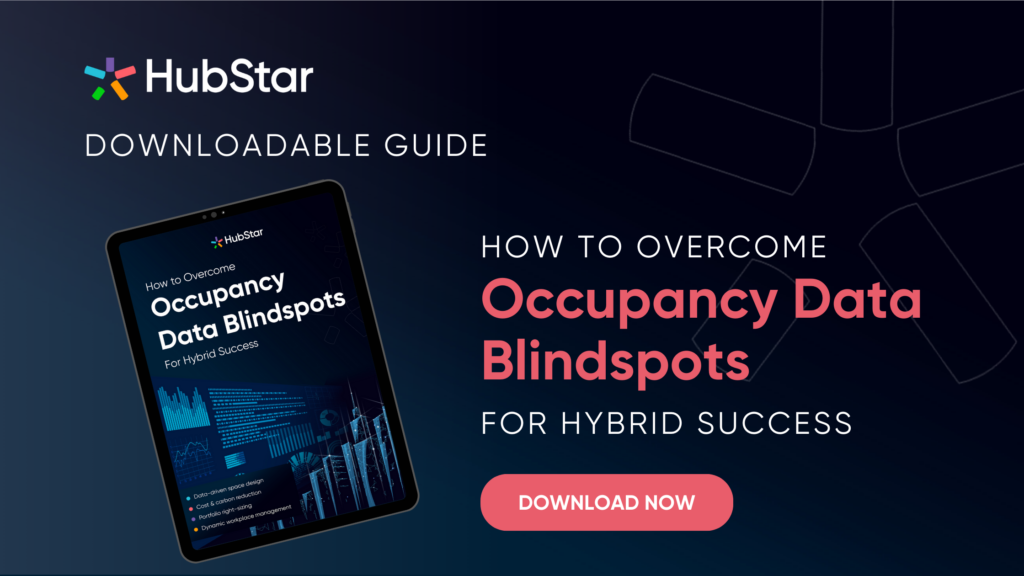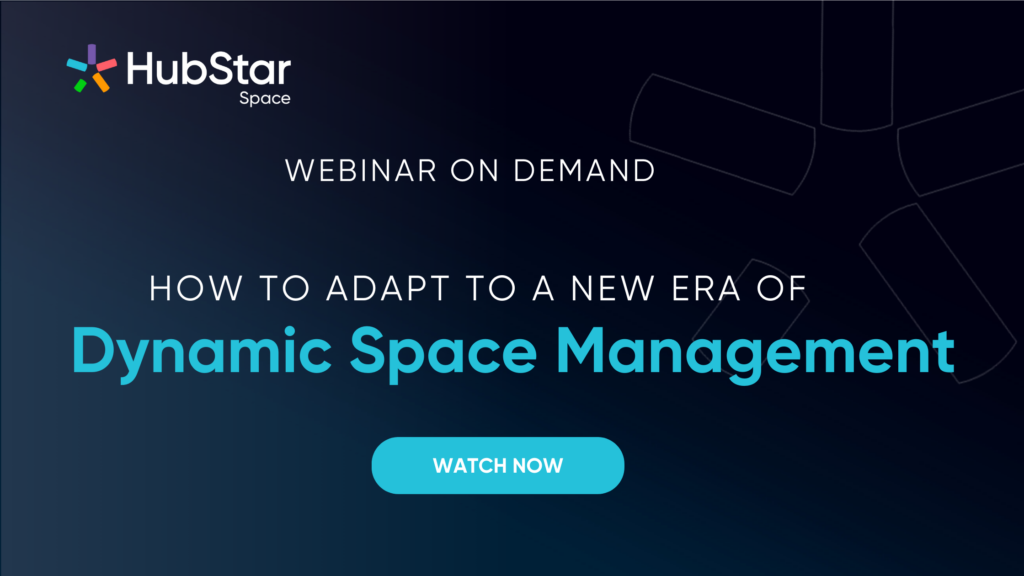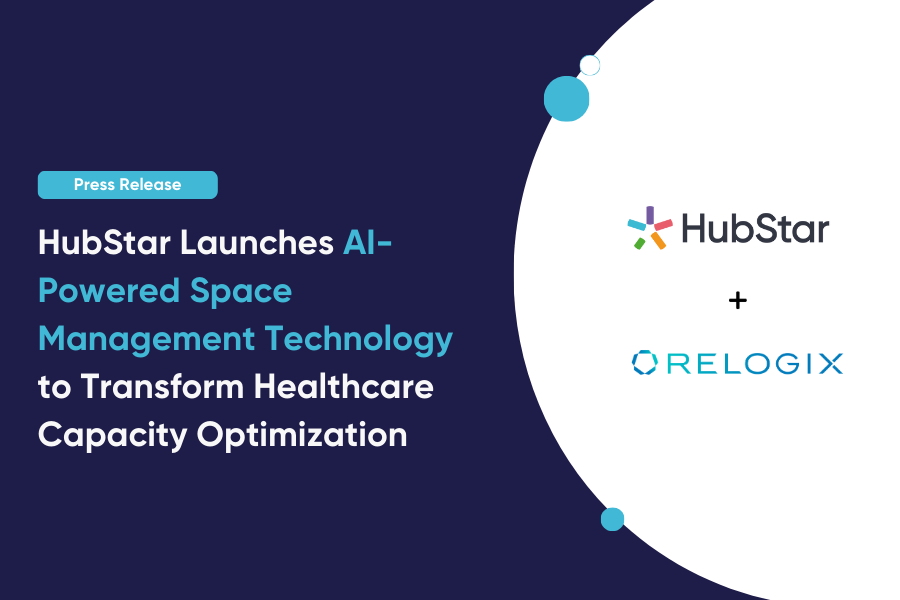What is Dynamic Workplace Management?

Contents
It was Socrates who said “The more I learn, the less I realize I know.” Or was it Einstein?
Whoever said it, most workplace leaders can probably relate to the sentiment. The more we learn about how hybrid work has developed over the last three years, the less we know about the right ways to manage workplaces effectively.
It’s this constant change that’s made good workplace management so much more challenging. Employee expectations, work patterns and corporate real estate have all been in a constant state of flux for the last three years.
And sure, change is a good thing. But when you don’t have the technology and approaches to keep up?
Not so much.
So now, workplace leaders have found themselves at a fork in the road with two options when it comes to workplace management:
- Attempt to change the workplace back into what it was pre-2020 when everything was static, so what worked just fine before will (hopefully) keep working that way and endure the consequences if it doesn’t
- Admit that you don’t have all the answers, that perpetual change is the only “new normal” (hands up if you hate that phrase), and that a new set of tools and approaches is needed.
This post is for people who want to explore the latter option. Which is a smart move, because no matter what anyone says, all we know is that we don’t know what the future of work will look like.
We can make some educated guesses, however. McKinsey, for instance, predicts that although office attendance levels will increase (but will still be lower than 2019 levels by 2025), demand for office space will stay below pre-pandemic levels for decades.
But we still need workplace management that continuously improves spaces, policies and cost-effectiveness during perpetual change.
Enter dynamic workplace management.
Dynamic workplace management is the answer to overcoming the challenge of constant change by working these three realities into approaches and tools:
- What employees want and need will change
- There is no one-size-fits-all
- Constant experimentation is the default
Dynamic workplace management: a definition
Dynamic workplace management is a process for improving the workplace experience by adapting to changing work environments, employee and employer expectations and organizational priorities. Dynamic workplace management is powered by flexible, connected systems, accurate data and automation of painful processes that detract focus from what really matters.
Like optimizing your website so more people click the buy button or understanding Gen Z slang, dynamic workplace management is a continuous, seemingly never ending process.
It might sound overwhelming, but continuous iteration is a much better option than failing to do so – the result of which is archaic, expensive workplaces that aren’t worth the commute.
Need a lot of boxes ticked for dynamic workplace management. But a few we’ll focus on here are:
- Workplace decisions that make the workplace better
- Individual control over employee workplace experience
- Space plans that are built to be changed
Static versus dynamic workplace management
Back in the day, the workplace was pretty much static. People came in five days a week and sat at the same desk. As long as you had enough space, enough meeting rooms, and some nice perks, you were probably all set as far as workplace management goes.
Any big decisions like acquiring more space came with months of advanced warning and visual confirmation. Changing up floor plans was done once a quarter or so.
But today, some people come in twice a week. Others come in five days a week. Some come in whenever the urge strikes them, and others are fully remote except for quarterly kickoffs with free happy hour afterwards.
Employees falling under each of the schedules above have completely different workplace expectations, likes and dislikes. Static workplace management will be woefully inadequate at giving different employees the right workplace environment, configurations and functionalities that elicit their best work.
And that’s not the only thing. The right floor plans and the right size real estate portfolio are also in a constant state of flux, making it even tougher to figure out which decisions to make with the data you have.

How to get your corporate real estate resize right
Not to mention everything else that goes into creating the best possible workplace, many of which we have no control over whatsoever. Economic realities, environmental regulations, whether the labor market is tipped in the favor of employers or employees…the list goes on.
Dynamic workplace management is designed to help workplaces adapt to uncertainty and provide the same quality of workplace experience, organizational performance and cost and carbon emission reduction, no matter what happens.
But how can you manage a workplace with the knowledge that what you decide today could be completely obsolete six months down the line?
Here are the right – and wrong – ways to do dynamic workplace management.
Dynamic workplace management: dos and don’ts
❌ Don’t: trust insufficient occupancy data for making big decisions
Pre-2020, badge swipes, manual walkarounds and maybe the odd meeting room occupancy sensor were all sufficient data sources for big decision making. That’s because in an office with static attendance, comparing space capacity to employee demand was a one-and-done exercise. Growth plans or increased hiring were the precursors to deciding a new floor was needed. If an office building was nearing capacity, badge swipes could tell you that.
But hybrid has really thrown a spanner in the works and made these data sources insufficient. Why?
Since office attendance is dynamic over a given week, month and even year, walkthroughs only capture occupancy at one moment – not how it’s evolving over time.
Badge swipes tell you how many people are coming into the office, but not what they’re doing once inside.
And while highly accurate, sensors only tell you how small portions of your portfolio are being used instead of the whole thing.
These data sources are no longer sufficient for dynamic workplaces, and create occupancy blindspots. The result? Only a partial, low-resolution view of occupancy.
And that means making costly, impactful decisions in the dark at a time when portfolio resizes and office redesigns are on everyone’s horizons. According to research by Cushman & Wakefield, over ⅔ of CRE leaders are planning a portfolio reduction over the next two years.
✅ Do: constantly measure occupancy data from a wide range of sources across every square inch of your portfolio.
This doesn’t mean rushing out to install dozens of new sensors. WiFi signals, sensors, desk and meeting room booking systems and badge swipes can get rid of your occupancy blind spots without breaking the bank.
In a perfect world, using a range of occupancy data sources will help you do these four things:
- Unify all your occupancy data in one place
- Predict the way future occupancy will go based on present and historical trends
- Get space consolidation suggestions and recommendations from your data
- Be in the know when occupancy goes drastically up, down or spaces are reaching capacity
❌Don’t: Put the onus on employees to find the right workspaces for a day in the office
Imagine this. Over the last three years, you’ve optimized your wfh setup to absolute perfection. The two massive monitors you need to do your job are right where you want them, natural light comes streaming in from your living room window, and your desk plants are arranged just so.
But there’s an announcement from your CEO: everyone needs to be in the office at least twice per week. Everyone will also need to book a desk in advance, since the office switched over to hot desking a while ago.
With difficulty, you sign up for and log onto a booking system that looks like it hasn’t been updated since 2002. After a skim through available desks, you don’t see monitors listed beside any, and you need two to do your job. But there must be desks with monitors, HR and Ops would have had to think this through before getting everyone back in the office.
So you send a quick Teams message to find out. It turns out there are a few desks with double monitors, but they’re not bookable and only available on a first-come-first-serve basis.
“Definitely show up before 8:30,” you’re advised, which would mean waking up at 5:30 AM to factor in a 2 hour commute with horrendous traffic.
“Oh, but don’t worry”, the HR Manager tells you in consolation, “Just come in four days a week and we’ll permanently assign you one of those desks.”
What would you choose – less sleep and possible burnout to secure the resources you need, or more sleep and the risk of an unproductive day?
Each employee has vastly different requirements when it comes to workplace experience, from equipment to the vibe they want for a specific day. Some days that’s going to be huddling with their team to meet a deadline, and other days it’s going to be working in dead silence with zero interruptions. Before coming into the office, people want reassurance that they’ll get the experience they want.
Because let’s face it, getting employees back in the office is a big ask. Putting the burden on them to find the book the resources for the workplace experience they want makes it an even bigger one.
✅ Do: Give employees choice and complete control over their workplace experience.
Going through a desk and meeting room booking system is already an extra step standing between employees and the office – make sure it takes as little time and effort as possible.
Intelligent scheduling, which uses AI to suggest the right resources, right places to sit and the right times to come in to each individual employee, putting them in the driver’s seat and personalizing their workplace experience.
❌Don’t: Use legacy space planning systems that make it a nightmare to change up floor plans and assign spaces.
One person occupies one workspace five days per week. This one-to-one sharing ratio of employee to space has been the backbone of space management for decades – but it’s not anymore.
Today, one person occupies one workspace, but perhaps only one day per week. A different person occupies the same workspace two days per week, and a third person makes the desk theirs on the remaining two days. We now have a sharing ratio of three to one.
One humble desk now has to work pretty hard to meet the needs of three different people. And with the global trend of corporate real estate portfolio reduction, that same desk might get a sharing ratio of five to one in the next few months.
Since space planning tools were built for workplace sharing ratios of one to one, adapting them to higher ratios and less square footage requires a lot of workarounds. Updating floor plans and running reports take an unrealistic amount of manual effort to keep up with, since changes are happening constantly.
What’s more, legacy systems leave space planners unprepared to answer inevitable questions from the C-Suite and real estate leaders, like:
- Will we have enough space to accommodate everyone if we switch our hybrid work policy to three instead of two days per week?
- Will we have enough space to accommodate everyone if we reduce our office square footage by X amount?
- What’s the ideal ratio of individual to collaborative workspaces? (71% of CRE leaders are planning to figure out this ratio and redesign the office accordingly)
Legacy space systems can’t quickly and accurately match workplace supply to employee demand, leading to excessive maintenance costs and workspaces that are underutilized, overcrowded and don’t provide the workplace experience employees want.
✅Do: Use a hybrid space management tool that’s built to accommodate dynamic floor plans and seating assignments.
Three things are key when it comes to space management for dynamic workplaces:
- Faster uploading and editing of floorplans
- Creating employee hybrid occupancy profiles and matching them with available space (for example – five days per week crew with permanent desks, twice a week crowd, once in a blue moon crowd)
- Interoperability with other systems. HR, workplace scheduling and space utilizations systems are just a few examples here.
–
Each of these dynamic workplace management dos has one thing in common – relying on accurate data that shows how things were and how things are in order to make the right decisions for the future.
Using dynamic workplace management as a framework, workplace leaders can move into the future knowing they don’t have all the answers right now – but the adaptation and iteration that stems from uncertainty is what builds a better workplace.
HubStar is a dynamic workplace management platform that helps hybrid organizations build better workplaces during continuous change. Through data-driven solutions for space utilization, intelligent scheduling and space management, HubStar is helping teams in over 60 countries boost productivity, rebuild connection and improve workplace experience while keeping costs and carbon emissions low.





